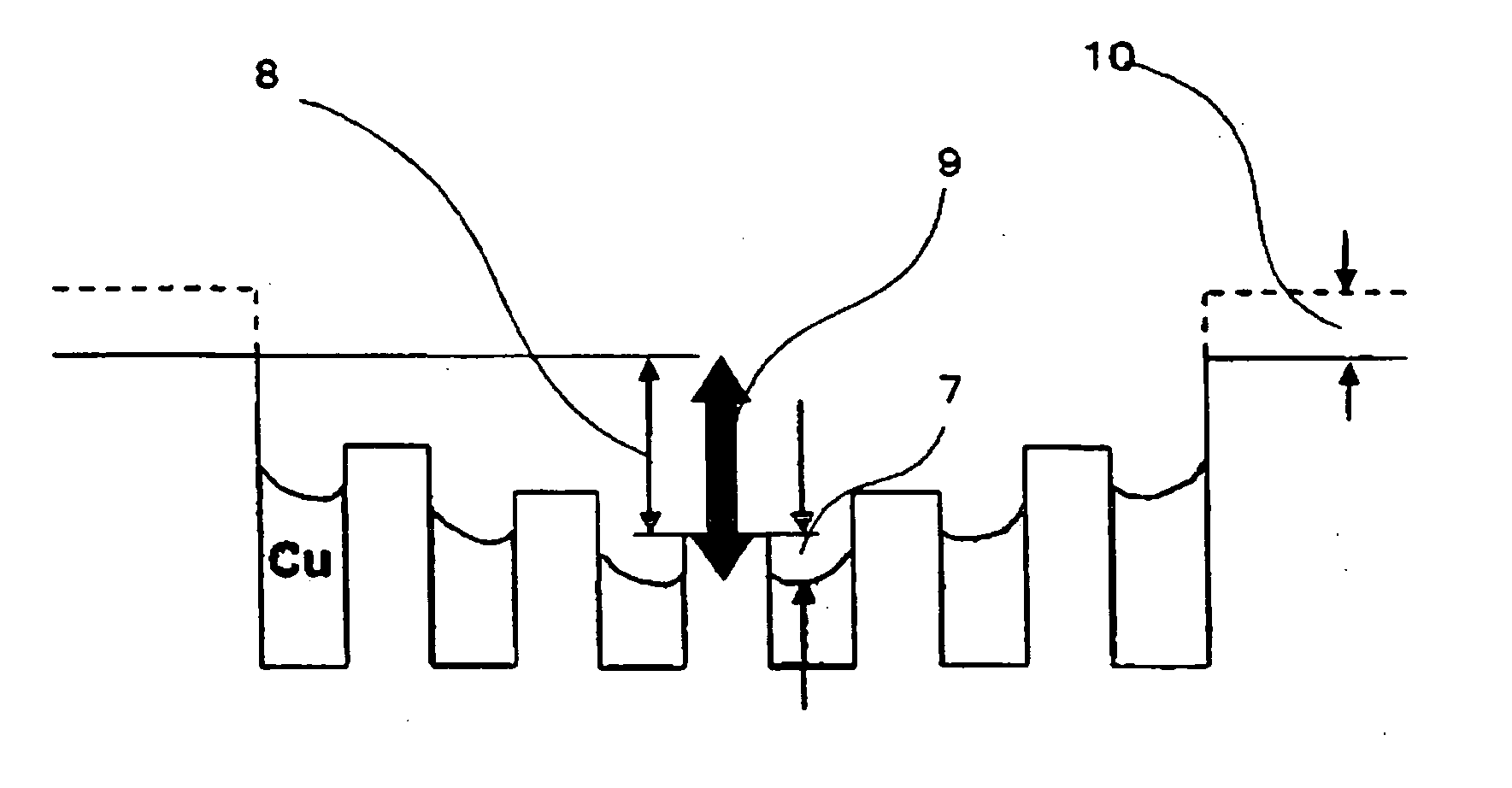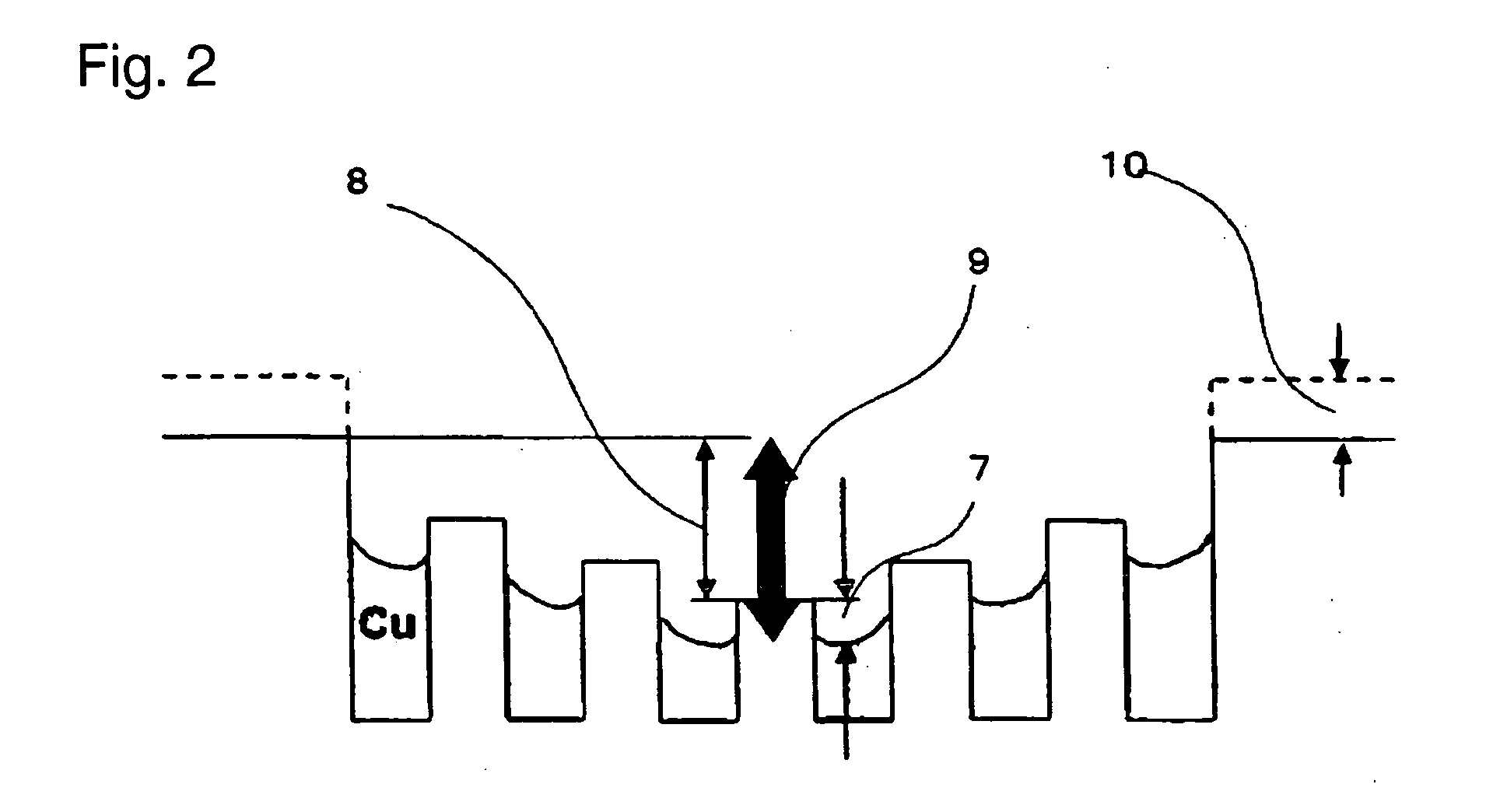Polishing composition and polishing method
a technology of polishing composition and polishing method, which is applied in the direction of lapping machines, manufacturing tools, other chemical processes, etc., can solve the problems of difficult cu formation, difficult lapping, and increased irregularities, and achieves excellent electrical characteristics, good polishing effect, and low cost.
- Summary
- Abstract
- Description
- Claims
- Application Information
AI Technical Summary
Benefits of technology
Problems solved by technology
Method used
Image
Examples
examples
[0074] Now, the present invention will be described in further detail with reference to Examples of the present invention (Examples 1 to 3, and Examples 8 to 12) and Comparative Examples (Examples 4 to 7).
(1) Preparation of Polishing Composition
[0075] Each polishing composition in Examples 1 to 7 was prepared as follows. An acid, a basic compound and a pH buffering agent were added to water, followed by stirring for 10 minutes to obtain liquid a. Then, the component (E) was dissolved in ethylene glycol so that the solid content concentration would be 40 mass %, and the resultant was added to liquid a. Then, the component (B) was further added thereto, followed by stirring for 10 minutes to obtain liquid b.
[0076] Then, an aqueous dispersion of the component (A) was slowly added to the liquid b, and then a basic compound was slowly added thereto to adjust the pH to 3. An aqueous solution of the component (D) was further added thereto, followed by stirring for 30 minutes, to obtain...
PUM
| Property | Measurement | Unit |
|---|---|---|
| thickness | aaaaa | aaaaa |
| mean particle diameter | aaaaa | aaaaa |
| mean particle diameter | aaaaa | aaaaa |
Abstract
Description
Claims
Application Information
 Login to View More
Login to View More - R&D
- Intellectual Property
- Life Sciences
- Materials
- Tech Scout
- Unparalleled Data Quality
- Higher Quality Content
- 60% Fewer Hallucinations
Browse by: Latest US Patents, China's latest patents, Technical Efficacy Thesaurus, Application Domain, Technology Topic, Popular Technical Reports.
© 2025 PatSnap. All rights reserved.Legal|Privacy policy|Modern Slavery Act Transparency Statement|Sitemap|About US| Contact US: help@patsnap.com



